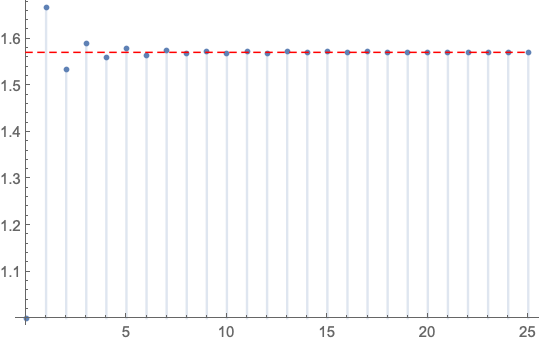I got the following ugly ev[n] as the least complicated answer to a Fourier coefficient integral
Integrate[Cos[t]*Sin [(2 n + 1)*t]/Sin[t], {t, 0, Pi/2}
But it refuses to refine /simplify further
ev[n : _] =
Refine[FullSimplify[
1/4 (-1)^
n (4/(1 + 2 n) - PolyGamma[1/4 - n/2] + PolyGamma[3/4 - n/2] +
PolyGamma[1/4 + n/2] - PolyGamma[3/4 + n/2]), {n \[Element]
Integers, n > -1}], {n \[Element] Integers, n > -1}]
Just gives me the same thing back whereas
FullSimplify[{ev[0], ev[1], ev[2], ev[3], ev[5]}]
{1, 5/3, 23/15, 167/105, 5471/3465}
evaluation gives simple fractions.Surely there must be some rational function of n that is a simplication of these PolyGamma's for integers. How do I get Mathematica to simplify to it?
Amazingly comprehensive beautiful answers. To those who have already put so much time into their answers I should have at least explainned this problem is the wingwise integral of the negative correction to wing circulation in first order lifting line theory for rectangular wing. Its suprising difficulty shows how hard it is to work lifting line theory through analytically.


